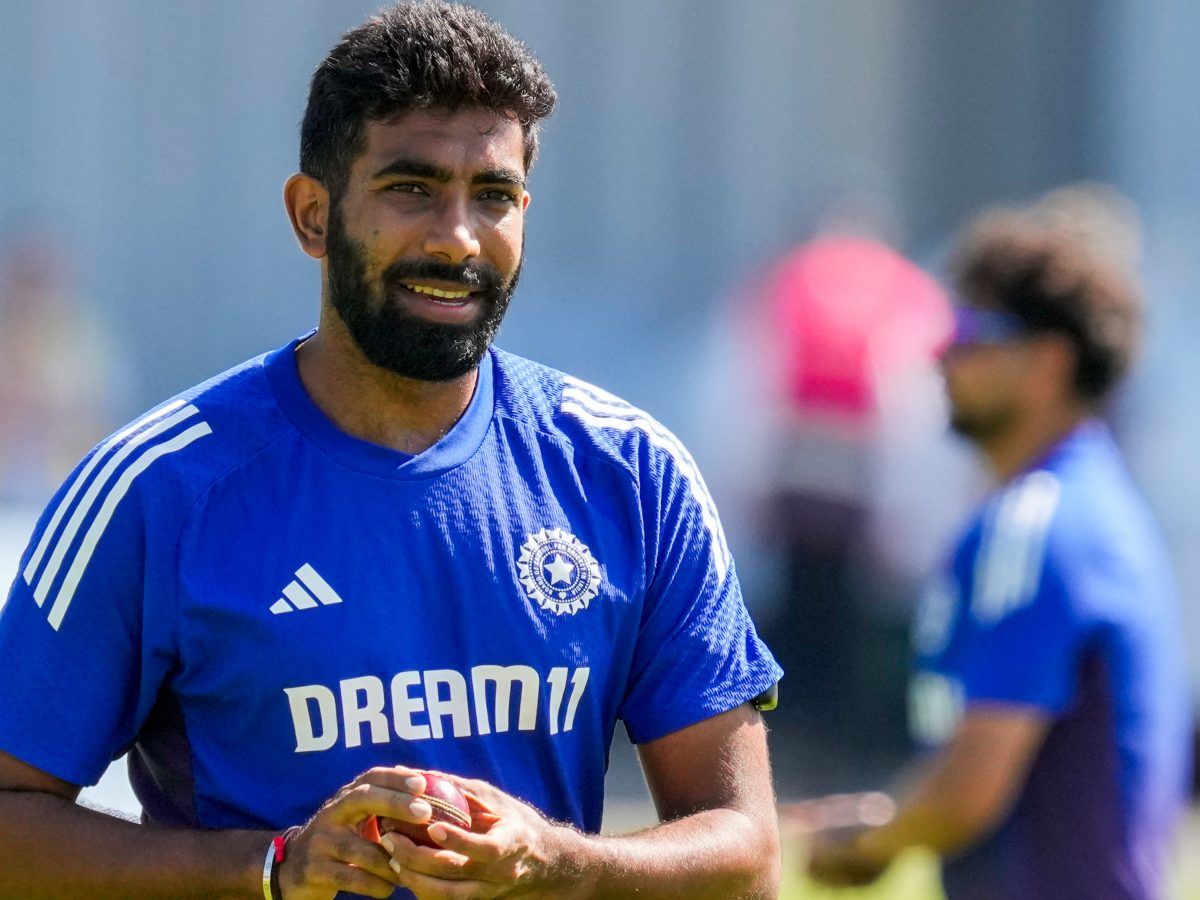Cricket is a sport that demands a combination of skill, strategy, and physical fitness. Whether you’re a seasoned cricketer or just starting out, maintaining your fitness is crucial for peak performance on the field. In this article, we’ll explore 10 easy fitness tips tailored specifically for cricket players to help you enhance your game and stay in top shape.
10 Easy Fitness Tips:
- Tip 1: Warm-Up Properly
- Tip 2: Focus on Cardiovascular Fitness
- Tip 3: Build Strength with Resistance Training
- Tip 4: Improve Flexibility with Stretching
- Tip 5: Work on Agility and Coordination
- Tip 6: Incorporate Core Exercises
- Tip 7: Pay Attention to Nutrition and Hydration
- Tip 8: Get Adequate Rest and Recovery
- Tip 9: Practice Mental Fitness
- Tip 10: Consistency is Key
Fitness Tip 1: Warm-Up Properly
Before stepping onto the cricket field, it’s essential to warm up your muscles and joints to prevent injuries and prepare your body for the demands of the game. A dynamic warm-up routine, including jogging, arm circles, leg swings, and lunges, can help increase blood flow and flexibility.
Here are five warm-up exercises suitable for cricket players:
- Dynamic Stretching: Perform dynamic stretches like arm circles, leg swings, torso twists, and lunges to increase blood flow to the muscles and improve flexibility.
- High Knees: Jog in place while lifting your knees as high as possible. This exercise helps to warm up the leg muscles and increase heart rate.
- Jumping Jacks: Start with your feet together and arms at your sides. Jump while simultaneously spreading your legs shoulder-width apart and raising your arms above your head. Return to the starting position and repeat. Jumping jacks elevate the heart rate and engage multiple muscle groups.
- Squats: Stand with your feet shoulder-width apart, toes pointed slightly outward. Bend your knees and lower your hips as if you’re sitting back into a chair, keeping your chest up and your back straight. Lower until your thighs are parallel to the ground, then push through your heels to return to the starting position. Squats activate the lower body muscles, including the quadriceps, hamstrings, and glutes.
- Shoulder Rotations with Resistance Bands: Hold a resistance band or towel with both hands, palms facing down, and arms extended straight out in front of you at shoulder height. Keeping your arms straight, slowly rotate your shoulders backward in a circular motion, feeling the stretch in your chest and shoulders. After several rotations, switch to rotating your shoulders forward. This exercise helps to mobilize and warm up the shoulder joints, crucial for cricket players, especially bowlers.
Remember to perform each exercise with controlled movements, focusing on proper form, and gradually increasing intensity as your body warms up.
Fitness Tip 2: Focus on Cardiovascular Fitness
Cricket requires bursts of sprinting, running between wickets, and fielding over long periods. Improving your cardiovascular fitness through activities like running, cycling, or swimming can enhance your endurance on the field, allowing you to perform at your best throughout the game.

Here are five cardiovascular fitness exercises suitable for cricketers:
- Interval Running: Cricketers can benefit from interval running, which involves alternating between high-intensity sprints and moderate-paced jogging. This exercise improves cardiovascular endurance and mimics the short bursts of energy required during cricket matches.
- Cycling: Cycling is an excellent low-impact cardiovascular exercise that also helps to build leg strength. Cricketers can include cycling in their fitness routine to improve endurance and overall cardiovascular health.
- Skipping (Jump Rope): Skipping is a simple yet effective cardiovascular exercise that can be done anywhere with just a rope. It helps to improve agility, coordination, and cardiovascular endurance, making it ideal for cricketers who need to react quickly on the field.
- High-Intensity Interval Training (HIIT): HIIT involves short bursts of intense exercise followed by brief periods of rest or low-intensity activity. Cricketers can incorporate HIIT workouts, such as burpees, jumping jacks, or high knees, to improve cardiovascular fitness, burn calories, and boost metabolism.
- Stair Climbing: Climbing stairs is a challenging cardiovascular exercise that targets the lower body muscles while also elevating the heart rate. Cricketers can use stadium stairs or a stair climber machine to improve cardiovascular endurance and leg strength, which are essential for running between wickets and fielding.
Fitness Tip 3: Build Strength with Resistance Training
Incorporating resistance training exercises such as squats, lunges, deadlifts, and push-ups into your fitness routine can help build strength in your muscles, improve power generation, and enhance overall performance on the cricket field.
- Start with Basics: Begin with light weights or resistance bands to master proper form and technique before progressing to heavier loads.
- Focus on Key Muscles: Target muscles used in cricket such as the legs, core, shoulders, and upper back to improve strength for bowling, batting, and fielding.
- Incorporate Compound Exercises: Include exercises like squats, lunges, deadlifts, and push-ups that engage multiple muscle groups simultaneously, mimicking the movements in cricket.
- Gradually Increase Intensity: Gradually increase the resistance or weight as your strength improves, but avoid lifting too heavy too soon to prevent injury.
- Allow for Rest and Recovery: Ensure adequate rest days between resistance training sessions to allow muscles to repair and grow stronger, aiding in overall performance on the field.

Fitness Tip 4: Improve Flexibility with Stretching
Flexibility is crucial for cricket players to execute movements with ease and reduce the risk of injuries. Incorporate stretching exercises targeting major muscle groups before and after your workouts to improve flexibility and range of motion.

5 Simple Tips to Improve Flexibility with Stretching for Cricketers
- Warm-Up First: Before diving into stretching exercises, warm up your muscles with light aerobic activities like jogging or jumping jacks. This gets blood flowing and primes your muscles for stretching.
- Stretch Slowly and Gently: When stretching, move into each position slowly and gently. Avoid bouncing, as it can lead to injury. Hold each stretch for about 15-30 seconds, breathing deeply throughout.
- Focus on Key Areas: Pay special attention to muscles commonly used in cricket, such as the hamstrings, quadriceps, calves, shoulders, and back. Incorporate stretches that target these areas to enhance flexibility and prevent injuries.
- Consistency is Key: Stretch regularly to see improvements in flexibility over time. Aim for at least 3-4 stretching sessions per week, both before and after cricket practice or games.
- Listen to Your Body: While stretching should feel challenging, it should never be painful. If you feel any sharp or intense pain, ease off immediately. Stretching should feel like a comfortable stretch, not a strain.
Tip 5: Work on Agility and Coordination
Cricket involves quick changes in direction, sharp reflexes, and precise movements. Practicing agility drills, ladder drills, and reaction exercises can help improve your agility, coordination, and responsiveness on the field.
Here are five simple tips for cricketers to work on agility and coordination:
- Speed Ladder Drills: Set up a speed ladder and practice moving your feet quickly in and out of the ladder squares. This helps improve footwork and agility, which are crucial for quick movements on the field.
- Reaction Ball Exercises: Use a reaction ball and bounce it against a wall. Try to react quickly and catch the ball as it bounces off unpredictably. This helps improve hand-eye coordination, essential for fielding and batting.
- Cone Drills: Place cones in a zigzag pattern and practice weaving in and out of them quickly. This helps improve agility and sharpens your ability to change direction swiftly, which is beneficial for fielding and running between the wickets.
- Balance Exercises: Incorporate balance exercises into your routine, such as standing on one leg or using a balance board. Good balance enhances stability and control, aiding in fielding, batting, and bowling.
- Agility Hurdles: Set up agility hurdles and practice jumping over them quickly while maintaining control and balance. This helps improve agility, explosiveness, and coordination, all of which are essential for cricket movements like diving catches or quick sprints between wickets.
Tip 6: Incorporate Core Exercises
A strong core is essential for stability, balance, and power transfer in cricket. Include core-strengthening exercises such as planks, Russian twists, and bicycle crunches in your workout routine to develop a solid core foundation.
Top 5 Core Exercises Every Cricketer Should Include in Their Workout Routine
- Plank: Strengthen your core muscles by holding a plank position for 30-60 seconds, focusing on keeping your body straight from head to heels.
- Russian Twists: Sit on the floor, lean back slightly, and twist your torso from side to side while holding a weight or a ball, engaging your oblique muscles.
- Leg Raises: Lie on your back, raise your legs up towards the ceiling, and slowly lower them back down without touching the floor, targeting your lower abdominal muscles.
- Bicycle Crunches: Lie on your back, bring your knees towards your chest, and alternate touching your elbows to the opposite knee while extending the other leg.
- Superman Exercise: Lie face down, extend your arms and legs, and lift your chest and thighs off the ground simultaneously, engaging your lower back and core muscles.
Also Read: How to Bowl Like a Pro: 10 Cricket Tips and Techniques
Tip 7: Pay Attention to Nutrition and Hydration
Proper nutrition and hydration play a significant role in fueling your body for optimal performance on the cricket field. Focus on consuming a balanced diet rich in lean proteins, complex carbohydrates, healthy fats, vitamins, and minerals. Stay hydrated by drinking water regularly before, during, and after training sessions and matches.
5 Nutrition and Hydration Tips for Cricketers:
- Hydrate Like a Pro: Drink plenty of water before, during, and after the game to stay hydrated. Avoid sugary drinks and opt for water or electrolyte-rich beverages to replenish lost fluids.
- Eat Balanced Meals: Prioritize balanced meals that include carbohydrates for energy, lean proteins for muscle repair, and healthy fats for sustained energy. Include fruits and vegetables for essential vitamins and minerals.
- Snack Smart: Choose nutritious snacks like nuts, yogurt, fruits, or whole-grain crackers to keep energy levels stable during breaks in play. Avoid sugary snacks that can lead to energy crashes.
- Time Your Meals: Eat a balanced meal 2-3 hours before the game to fuel up. During longer matches or training sessions, have small snacks like energy bars or fruit to maintain energy levels. After the game, refuel with a balanced meal to support recovery.
- Listen to Your Body: Pay attention to hunger and thirst cues during the game. If you’re feeling hungry or thirsty, take breaks to refuel and rehydrate. Remember, proper nutrition and hydration are essential for peak performance and recovery in cricket.
Tip 8: Get Adequate Rest and Recovery
Rest and recovery are essential components of any fitness regimen. Allow your body time to rest and repair by incorporating rest days into your training schedule. Practice recovery strategies such as foam rolling, massage, and adequate sleep to optimize your body’s recovery process and prevent burnout.
Here are 5 tips for Adequate Rest and Recovery for crickters:
- Prioritize Sleep: Make sure you get enough sleep each night. Aim for around 7-9 hours of good quality sleep to help your body recover from training and matches.
- Rest Days Are Important: Give your body a break. Rest days allow your muscles to repair and grow stronger. Schedule regular rest days into your training routine.
- Listen to Your Body: Pay attention to how your body feels. If you’re feeling tired or sore, it’s okay to take it easy or adjust your training intensity. Pushing through fatigue can lead to injury.
- Stay Hydrated and Eat Well: Drink plenty of water throughout the day to stay hydrated, and fuel your body with nutritious foods. Eating a balanced diet rich in protein, carbohydrates, and healthy fats supports recovery.
- Use Recovery Techniques: Incorporate stretching, foam rolling, and other recovery techniques into your routine. These can help reduce muscle soreness and improve flexibility, aiding in your overall recovery process.
Tip 9: Practice Mental Fitness
Cricket is as much a mental game as it is physical. Develop mental resilience, focus, and concentration by practicing mindfulness, visualization techniques, and positive self-talk. Train your mind to stay calm under pressure and maintain confidence in your abilities on the field.
Here are five simple tips for practicing mental fitness for cricketers:
- Stay Positive: Keep a positive mindset even when facing challenges. Focus on what you can control and believe in your abilities.
- Visualize Success: Picture yourself performing well in matches. Visualizing success can boost your confidence and help you stay calm under pressure.
- Set Goals: Set clear and achievable goals for yourself, both in training and during matches. Breaking down larger goals into smaller ones can make them feel more manageable.
- Practice Mindfulness: Stay present in the moment and pay attention to your thoughts and feelings without judgment. This can help reduce stress and improve focus.
- Learn from Mistakes: Instead of dwelling on mistakes, use them as learning opportunities. Reflect on what went wrong and how you can improve for next time, then move forward with a positive attitude.
Tip 10: Consistency is Key
Consistency is key to achieving long-term fitness goals. Stay committed to your training regimen, maintain a healthy lifestyle, and prioritize your fitness year-round, not just during the cricket season. Consistent effort and dedication will lead to improvements in your performance and overall well-being over time.
Conclusion:
Incorporating these 10 easy fitness tips into your routine can help cricket players of all levels enhance their performance, prevent injuries, and maintain overall health and fitness. By warming up properly, focusing on cardiovascular fitness, building strength, improving flexibility, working on agility and coordination, incorporating core exercises, paying attention to nutrition and hydration, getting adequate rest and recovery, practicing mental fitness, and maintaining consistency, you can elevate your game and enjoy success on the cricket field. Remember, fitness is a journey, so stay committed, stay disciplined, and enjoy the rewards of your efforts both on and off the field.






